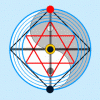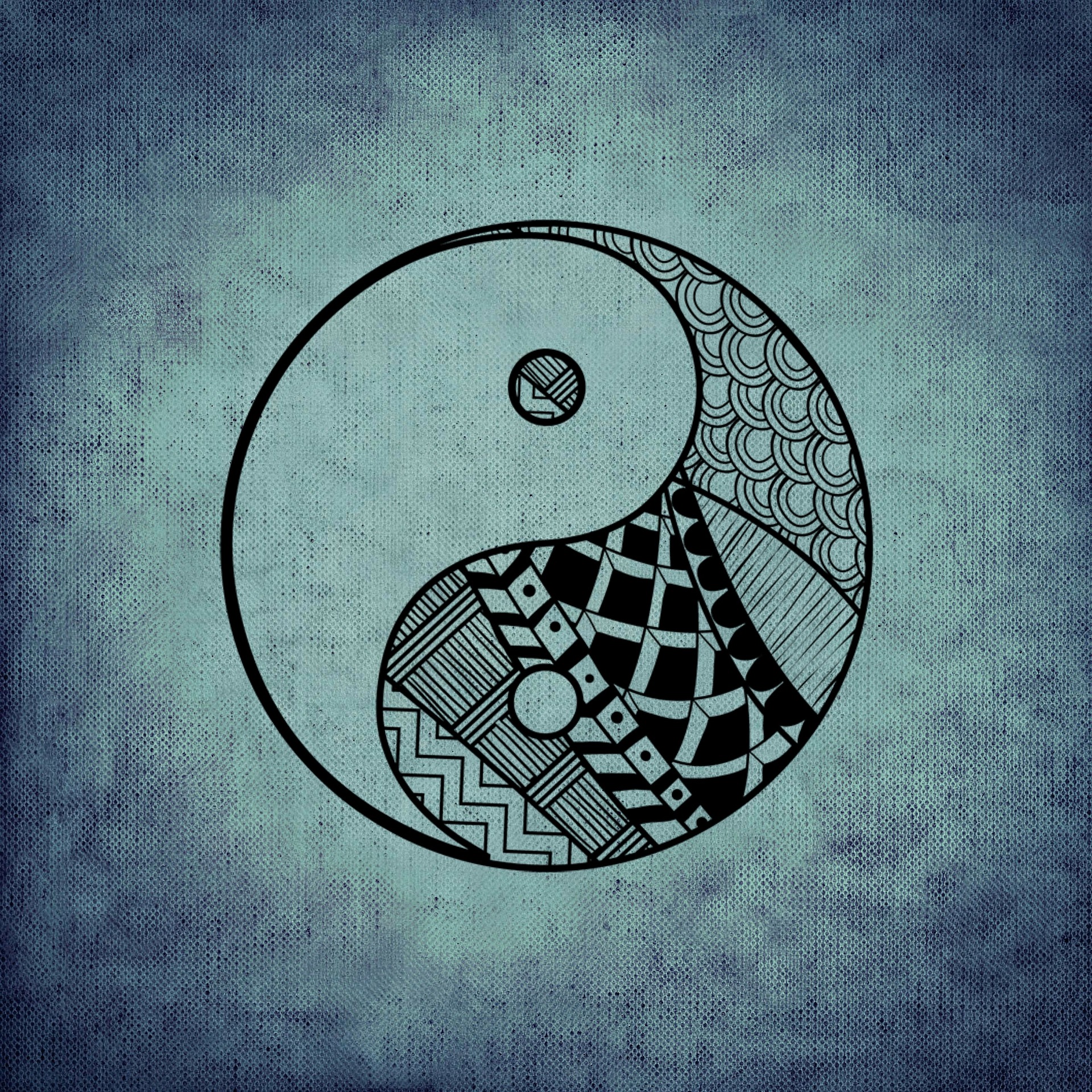 Submitted by IaMaEl on
Submitted by IaMaEl on

Complementary Opposites
If you study any aspect of oriental philosophy or culture you soon come across the terms 'yin' and 'yang'. These terms are used to describe the opposite yet complementary nature of iChi energy which ancient people understood to be present behind the manifestation of anything in nature - the creation of structures, actions, seasons, emotions and movement.
In I Ching Astrology the qualities of yin and yang lie behind the understanding of the cycles of change that we go through. These nine-year cycles are moving from yin to yang; this means from dormancy in winter (yin) through the active rising stage of spring to the consolidation stages of yang. Similarly, the principal numbers also contain yin/yang attributes.
Yang’s nature is seen to emanate from the heavens and descend towards the earth. Conversely, yin’s natural tendency is to rise and return towards the heavens. As yin’s energy rises it becomes more diffused, and therefore slower and cooler, whereas yang’s descending energy becomes more concentrated, harder, hotter and faster. The outcome of this process is that structures that are bigger are seen as more yin, while those that are smaller and more compact are seen as more yang.
Here is a list of some typical opposites associated with yin and yang.
Yin: passivity; coolness; stillness; potential energy (power); cool; introvert; diligent; cautious; maternal; insecure; dependent
Yang: activity heat; movement; power (obvious); self-conscious; passionate; extrovert; impulsive; stubborn; bold; paternal; adventurous; independent
Intermingled Concepts
An important principle to bear in mind is that nothing is totally yin and nothing is totally yang. The centuries-old yin/yang symbol, which everyone these days is familiar with, expresses this concept perfectly. The dark section of the yin/yang symbol is representative of yin, but within it is a small circle of the opposite (yang) from the left-hand side. If we were to look at a tree we could say that its leaves, branches and trunk represent the yin element in its structure and that the yang expression is within its downward-growing roots.
A spring onion has far more upward nature (yin) within its structure and far less root (yang); compares this with a carrot, which has a greater concentration of energy and structure within its root (yang) and less emphasis on the leaf structure (yin). Similarly, if our nature is predominantly spiritual or intellectual we are more yin than an individual who is practical and grounded, who would be seen as more yang.
People who are physically and emotionally flexible would be relatively more yin than people who are more rigid and inflexible. Nighttime, when we rest and are more passive, is traditionally understood as a more yin time, whereas the daylight hours when we are active and busy are seen as more yang. Winter, when it is colder and we are less active, is more yin than the summertime, when it is hotter and we are more outdoor and active.
Intermingled Concepts
In ancient times people learn from their surroundings in the natural world. It is therefore not surprising that they described the qualities of yin and yang from nature, the elements and the seasons. To avoid the danger of categorizing all that we see into lists of yin and yang, let’s take a closer look at nature in terms of yin and yang.
Wood Structures built of light, hollow flexible types of wooed have an uplifting nature but at the same time a lack of stability. If you were chairing an important meeting you would appreciate a strong, solid oak chair to support you, but you might feel less confident in a flimsy bamboo beach chair. The latter, however, would be ideal if you were on holiday and wanted to relax with an informal routine. The more solid timbers that take time to grow and mature, such as oak, are far more yang than the hollow, lighter structures of bamboo that only take weeks to grow.
Rocks Almost all mineral structures in nature needed time, pressure and heat to form. The more of these qualities that were present, the more yang the structure of the resultant rocks. One of the most yang geological structures is granite, which took unimaginable time and pressure to form and can withstand the battering of the elements for thousands of years. Younger, sedimentary rocks exhibit far less yang. Equally, while the granite may be a fine example of yang energy it does not allow much yin expression to be present. This is seen in the lack of vegetation, the dryness and the absence of the freshness and vitality that you can feel when you walk on lighter or more sandy mineral structures.
Soils Clay is a great example of a yang soil structure, heavy, sticky and rich in minerals it can be made even more yang by the use of fire. Compost, light soil and sand are examples of yin soil structures, which although fertile, tend to be superficial and easily eroded by rain.
Fire A fire made from twigs or leaves may appear superficially right and roaring, but it does not have the yang to sustain long, slow combustion. Compare this with a fire of coal or charcoal, which will burn steadily for hours at a constant temperature – it is easy to see that the slower fire is more yang. It is not its superficial quality that merits this description but its inner nature.
Water This element provides a whole spectrum of yin/yang qualities. Fresh, clear, running water that can appear superficially yang (because it is active) is really presenting us with some of the finest qualities of yin, its freshness and vitality represent yin’s ‘upward’ nature. Conversely, the stillness and depth of water that we perceive in a lake or an ocean may appear superficially yin (inactive), but its hidden strength and deeper nature are the clue to its more yang nature.
Health
Yin symptoms Tiredness is a common problem in modern life and is a good example of a yin symptom. Its causes can be lack of fresh air, over-eating, not enough sleep or not enough variety in our lives. Feeling withdrawn and fearful while at the same time avoiding engaging in too much activity is another yin symptom. Craving sweet foods, sweet drinks, ice cream, chocolate and stimulants such as coffee is also symptomatic of a yin condition. A very practical way of assessing your condition is to see whether your hands are damp or dry: any excess damp is yin.
Yang symptoms Being hyperactive – unable to rest, to slow down or even have a full night’s sleep – is a symptom of an over-yang condition. If you crave salty, savory or hot foods and like plenty of physical activity for recreation then your condition is more yang. Dry hands with a firm handshake is another sign of a yang condition.
Jon Sandifer
http://www.articlebiz.com/article/1051464012-1-the-significance-of-yin-and-yang-part-one/
http://www.articlebiz.com/article/1051466210-1-the-significance-of-yin-and-yang-part-two/